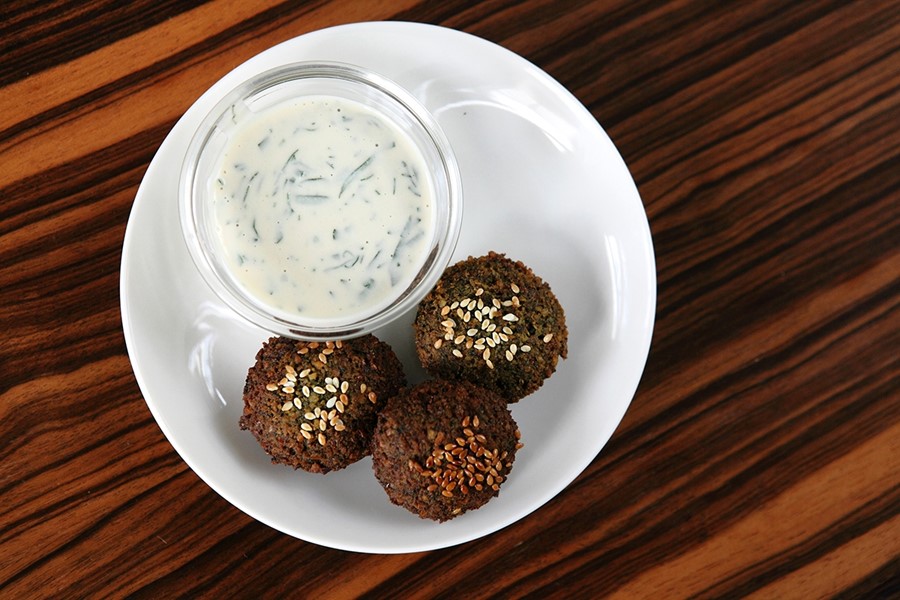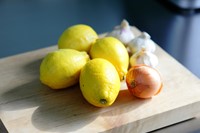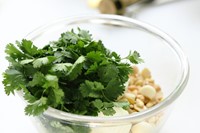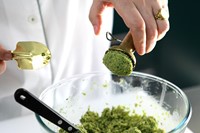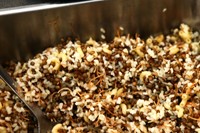The Hunger meets writer and chef, Anissa Helou, consultant for new fast food restaurant Koshari Street, for a masterclass in making delectable falafel
A staple of Egyptian quick cuisine for over 100 years, koshari came to international prominence two years back during the protests in Tahrir Square, Cairo, when the thousands of people who gathered there were offered this dish as sustenance by the many street food sellers who stayed on to support their efforts.
Comprised of rice and lentils, topped with short pasta, garlic tomato sauce, fried onions, and chickpeas, koshari is a melting pot of a dish, showing off the Middle Eastern, Indian, and Mediterranean influences of the region, with a satisfying composition of flavours and textures.
“It’s a very popular dish in Egypt,” says renowned London-based cookery writer and chef, Anissa Helou. “It’s a classless food. You can go to a very rich home and you’ll find koshari, or a poor home and you’ll find koshari.”
“It’s a classless food. You can go to a very rich home and you’ll find koshari, or a poor home and you’ll find koshari” — Anissa Helou
Recently opened in London’s St Martin’s Lane, new in-and-out spot Koshari Street is offering this eponymous speciality under Helou’s direction, and with her special spice mix to boot. “Street food is basically a functional thing,” Helou tells us from her Shoreditch loft home, where she also holds cookery classes. “If you go to the souqs or old Cairo, you have carts everywhere, and on the Corniche in Lebanon. During Ramadan even more, at various feasts and celebrations. People eat on the street because they can’t get home for meals, and they want to eat decent food at an accessible price. So it’s not a trendy thing, it’s just a way of life – it’s very present in Turkey, Syria, Lebanon, Egypt, and Morocco.”
Helou, who was born to a Lebanese mother and Syrian father, has written more than five cookery books and specialises in the cuisines of North Africa, the Middle East, and the Mediterranean. Before this she was a representative for Sotheby’s in the Middle East, as well as running an antiques shop in Paris and an art consultancy in London.
Taking on another street food favourite, we joined Helou to make falafel; a seemingly simple dish that can be difficult to master. While its origins are disputed, many believe the falafel had its humble beginnings in Egypt, where it would have drawn on similar influences to koshari. “It’s one of those specialist dishes where you’ll have a guy who has been making the same recipe for 50 years, and he’s learned it from his father, and his father has learned it from the grandfather, and they have their own secret mix and they do it perfectly.”
Made variously with broad beans and chickpeas, Helou put together her own version for the day of our visit, showing us a few tips along the way.
Anissa Helou’s Falafel
Serves 4-6
100g dried chickpeas, soaked overnight in plenty water with ½ teaspoon bicarbonate of soda
200g peeled split dried broad beans, soaked overnight in plenty water with 1tsp bicarbonate of soda
5 large garlic cloves, peeled
1 small onion, peeled
50g fresh coriander, most of the bottom stalk discarded
1tsp ground cumin
1tsp ground allspice (or 7-spice mixture (link)
1/4 tsp finely ground black pepper
1/8 tsp cayenne pepper
1/2 tsp bicarbonate of soda, plus another 1/2 tsp to mix in just before frying
Sea salt to taste
You can use a falafel shaper (they sell them at London Lebanese shop, Green Valley), or alternatively, shape the falafels by hand.
1. Drain and rinse the chickpeas and broad beans. Grind through a food processor (or meat grinder if you have one), together with the rest of the ingredients. Process to a fine paste.
2. Transfer the mixture to a bowl. Taste and adjust seasoning if necessary. Cover and let rest for 30 minutes in the refrigerator.
3. Heat enough vegetable oil in a large frying pan (2in or so) to deep-fry the falafel, and place over a medium heat. Dip a piece of bread to test the oil. If it bubbles around it, the oil is ready so start shaping the falafel.
4. Mix the last 1/2 tsp bicarbonate of soda with the falafel mix. Fill the falafel shaper and smooth the mixture making a mound. Hold the shaper over the hot oil and release the lever to pop the falafel ball into the oil. Be careful not to splash. Add more falafel balls this way. Fry the balls for 3-4 minutes, stirring occasionally, until they are golden brown all over. Repeat the same process until you have used up all the falafel mix, making sure you do not crowd the frying pan. You should end up with about 15 falafel balls.
5. Remove each ball with a slotted spoon onto several layers of paper towel to drain off the excess oil. Serve hot.
Text by Ananda Pellerin
Ananda Pellerin is a London-based writer and Neil Wissink is a visual artist also based in London. More from The Hunger here, and contact The Hunger here.
